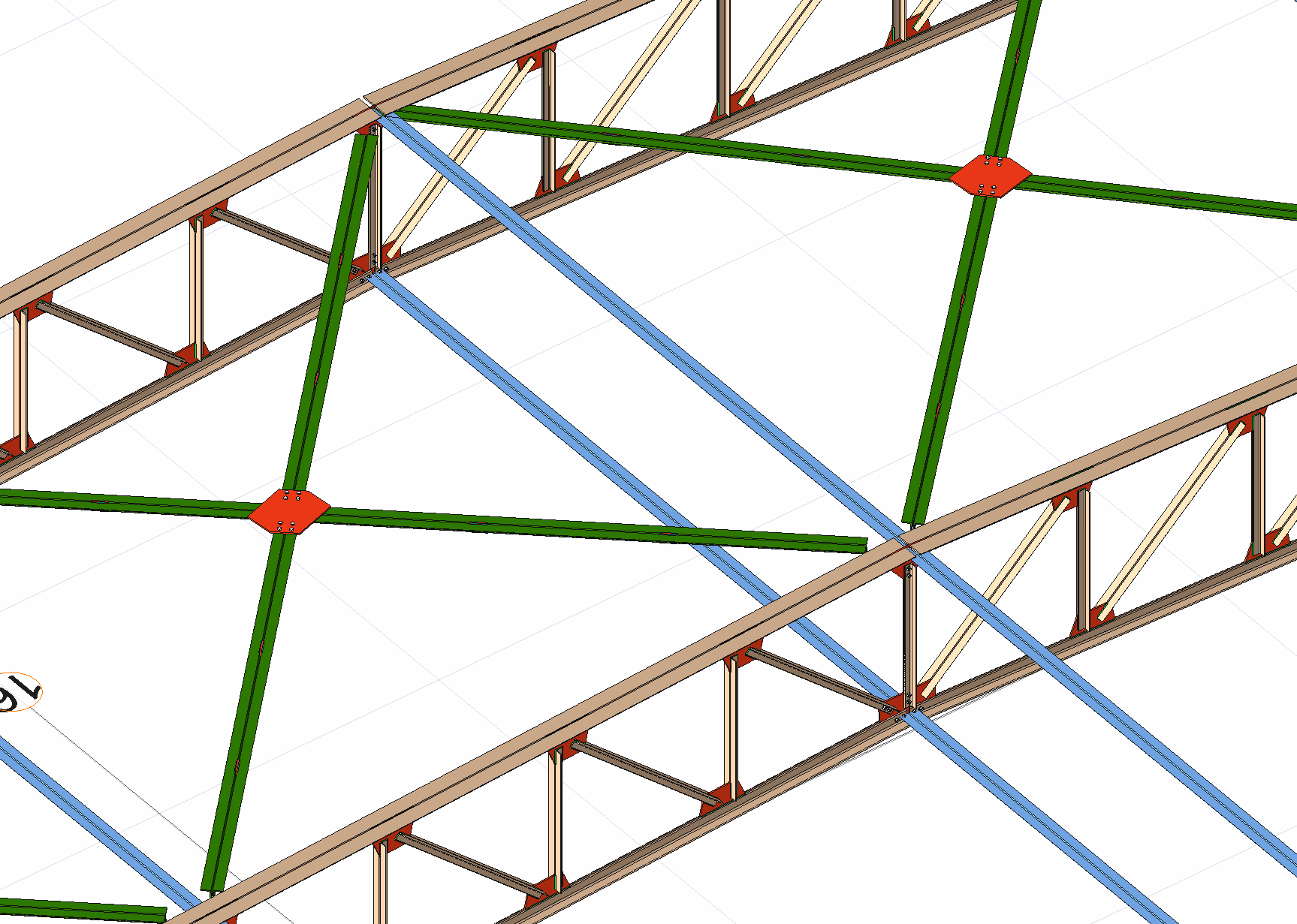Steel truss slenderness check failure.
This message is created by specifying the element name and floor on which it is located at the beginning of the report.
For example,
TRS001 BASE STORY Slenderness check failure.
For truss members designed based on compression, or tension, the effective slenderness ratio control is made according to CYTHYE 2016 (GKT & YDKT), AISC 360-16 (ASD & LRFD), or EN 1993-1-1 codes.
According to AISC 341-16 and AISC 360-16, the effective slenderness ratio KL/r ≤ 200 for compression members should be satisfied.
According to AISC 341-16 and AISC 360-16, the effective slenderness ratio KL/r ≤ 300 for tension members should be satisfied.
ideCAD Structural automatically checks the slenderness ratio according to axial tension or compression conditions.
Solutions:
Laterally unbraced length of the header truss element can be reduced by using steel braces.

If the footer element of the trusses does not provide the slenderness ratio, a stability element can be defined to shorten the Laterally unbraced length.

The truss member cross-section can be enlarged.
By changing the truss pattern, an element that is under axial compression in the support area can be switched to tension.
Symbols
K: effective length factor
L: laterally unbraced length of the member
r: radius of gyration
Next Topic
